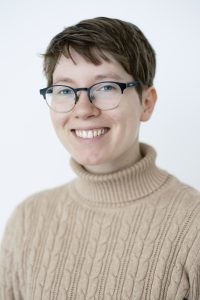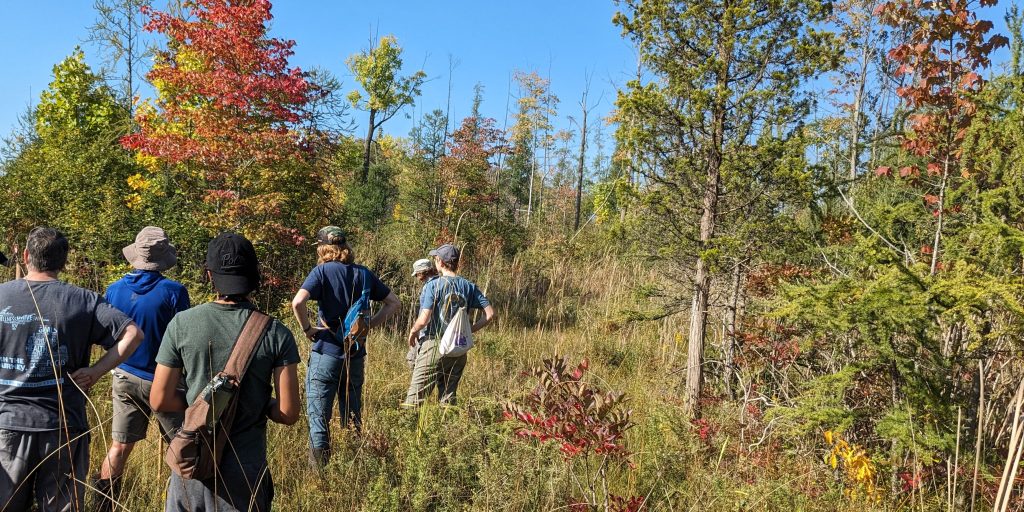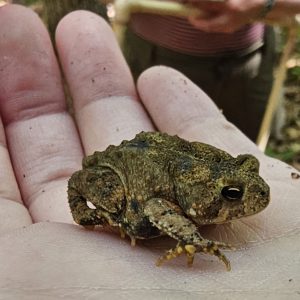
As I reflect on my time as a science education and outreach fellow, I’m thinking about connections – the connections between scientists and communities, and more generally, between humans and the natural world. W. K. Kellogg Biological Station is a remarkable place where these relationships are cultivated and strengthened. Outreach at KBS takes many forms, from the K-12 Partnership (celebrating its 25th anniversary this summer!) to the Dessert with Discussion series to Blending Art & Science. These programs and many more provide opportunities for scientists, students, teachers, families, and community members to come together and share our knowledge and passion for the living world.
During my fellowship, I have had the opportunity to help coordinate and lead some of these events. Along the way, I have gained experience in science communication with a wide range of audiences, from elementary schoolers to retirees. This experience has taught me that outreach takes perseverance, adaptability, and planning, but the results can be very rewarding. I have also learned that outreach is a two-way street; by listening and responding to the needs of our communities, we can grow lasting and impactful connections.
Case study: Conservation Stewards
One highlight of my fellowship was helping to coordinate the Michigan Conservation Stewards Program, or CSP, an 8-week course where participants learn about local ecosystems and develop capstone projects to support restoration and conservation in their communities. Along with presenting a lesson on wildlife conservation, I joined fellow participant Karla Hammond, a teacher at Pennfield High School, to develop a plan to install educational signage at the Pennfield rain garden. I also had the opportunity to speak to her class about the importance of watersheds.

To me, the greatest strength of CSP is the collective involvement of scientists, educators, and community members. By the end of the program, participants had created a wide range of impactful projects, from tree surveys to invasive species removal. I would recommend the program to anyone with an interest in protecting our land and water resources.
Why outreach matters

Science education and outreach are central to the mission of KBS. There are many reasons why outreach is important. First, building connections with the public can broaden the impact of KBS research, particularly in applied fields such as agriculture and conservation. Science education and outreach programs strengthen public understanding and support for our work. Moreover, these programs increase science literacy and introduce young people to potential careers in science. Finally, outreach is fun! Nothing can match the enthusiasm of a group of elementary school students experiencing the bird sanctuary for the first time. These connections truly have a lasting impact in people’s lives.
Learn more about KBS outreach
Whether you are a student, teacher, or interested member of the public, there are many ways to connect with KBS through our outreach initiatives.
- Take a field trip or virtual tour
- Discover resources and opportunities for K-12 teachers
- Check out our calendar of public events for students, adults, and families
~~~~~~~~~~~~~~~~~~~~
Ayley Shortridge is a master’s student in the Janzen Lab at the W.K. Kellogg Biological Station and a 2023-24 Science Education and Outreach Fellow. She studies how turtles are impacted by their changing environment and enjoys writing about science and conservation. Evans Lab.
~~~~~~~~~~~~~~~~~~~~

A legacy of conservation; a commitment to sustainability.
3700 E. Gull Lake Drive
Hickory Corners, MI 49060
(269) 671-5117
info@kbs.msu.edu